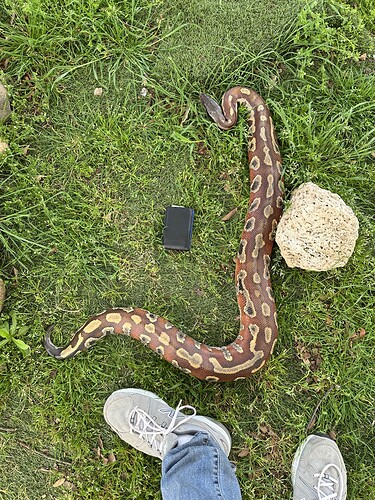Lazarus would like to remind everyone not to overfeed your adult python and boa pets. As humans we associate food with love and care. For large bodied constrictors though, less is more. Breeding animals require a food surplus and more substantial fat stores to produce. Your pets don’t need such a high caloric intake. They have a very complex digestive system and digestion comes at a slight cost to them. They also don’t store lipids intramuscularly like mammals do. Meaning fat in reptiles are not stored within the muscles. They’re stored in abdominal cavity in the form of “fat pads” as well as in the tail, and more dangerously, the liver. This can lead to an array of health conditions, most notably but not by any means restricted to, fatty liver disease (hepatic steatosis).
Feeding schedule and prey size are something you have to determine based on the overall size and metabolic efficiency of your pet. Large boid species like BCIs, Blood and Short Tail Pythons, Retics, Burmese Pythons, Carpet Pythons, Ball Pythons, etc.
Lazarus here eats an average of 6-7 jumbo rats per year. My large adult pet boas are fed monthly in most cases with a gap of 1-2 months in winter. My 11’ Reticulated Python is fed monthly for the most part with an extra meal thrown in occasionally. All of these animals thrive at that amount of calorie intake. They do not breed so they have no need for excess lipid storage. Healthy animals should be lean. As a vet once told me (and this applies to almost all vertebrates), skinny dogs live longer.
Being opportunistic feeders, they’re always going to act hungry. Sometimes love isn’t giving them what they want, but giving them only what they need. They’re smooth brained animals and lack the ability to make complex decisions. That part is up to you!
If you’re interested in seeing the ‘fat pads’ in a ball python a friend recently dissected after it passed, send me a message. The photo is a bit graphic to be posted publicly. Although it would probably be very enlightening for a lot of people.
Links
How Reptile Store Fat
